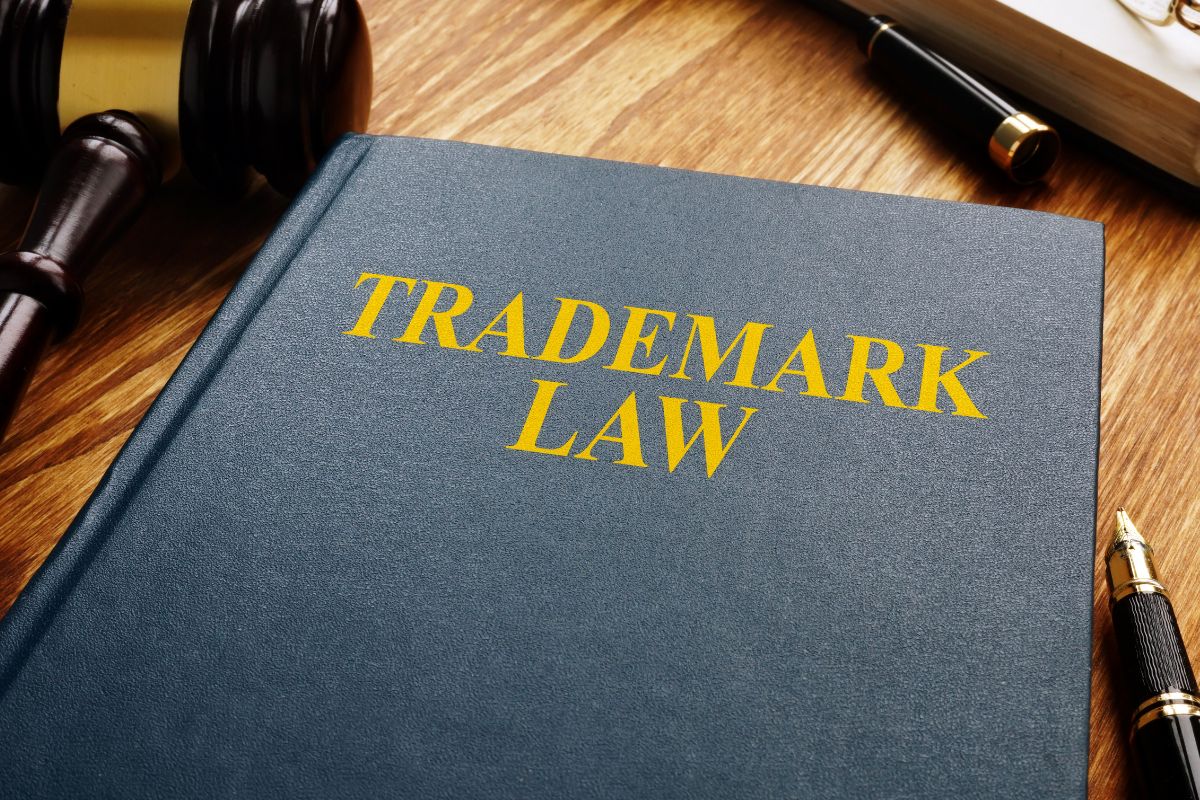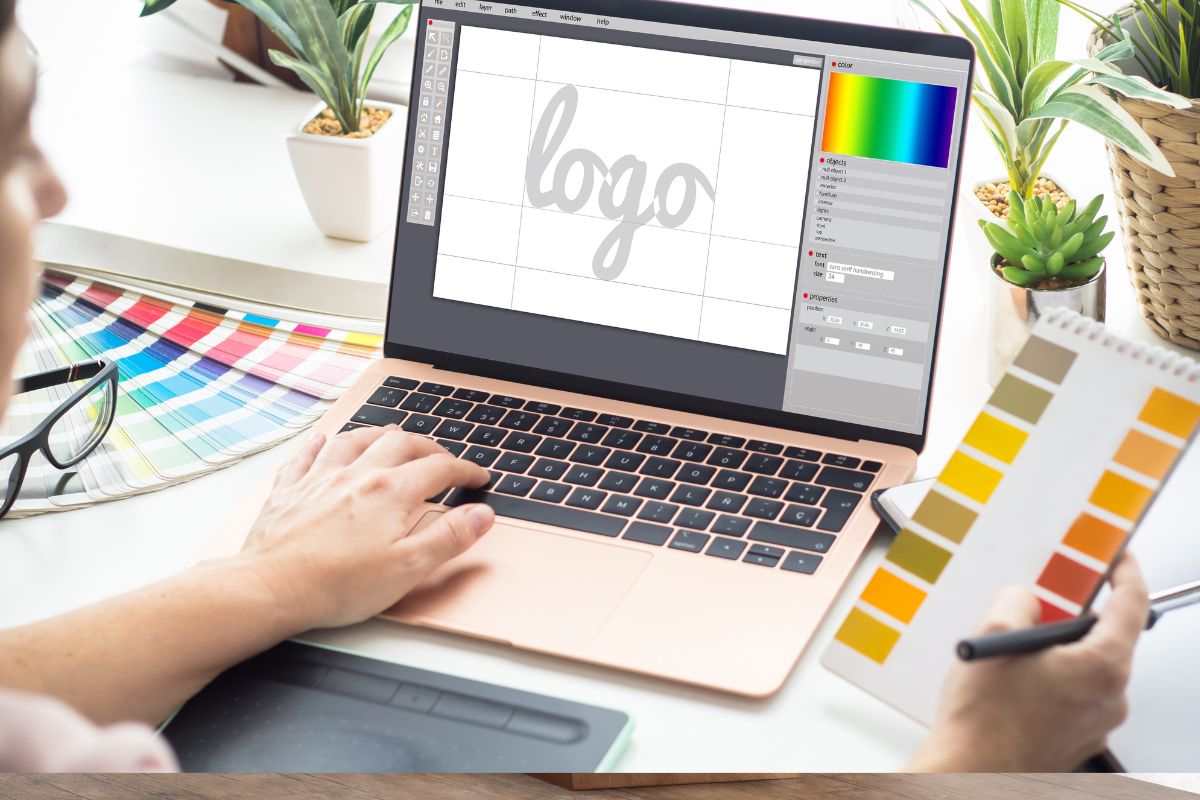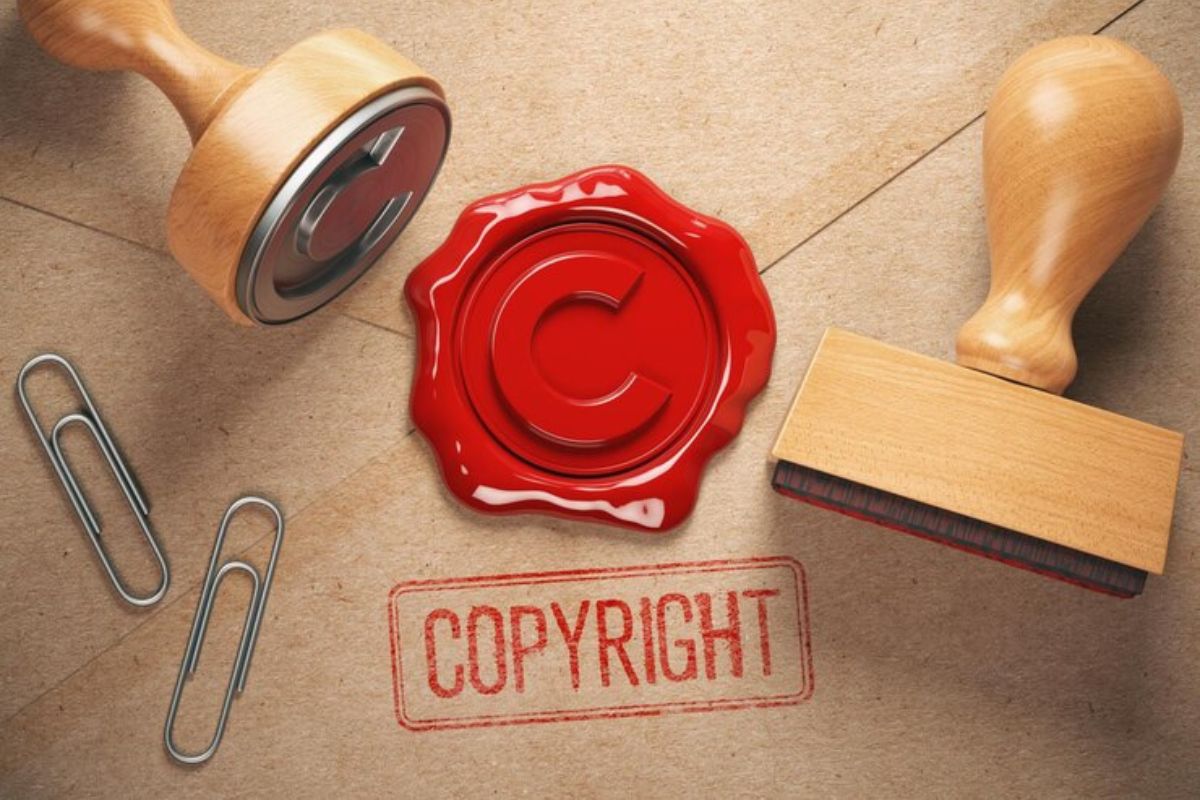When creating a logo for your business, protecting it is crucial.
To copyright a logo, you need to register it with the U.S. Copyright Office, ensuring your design is legally recognized as your intellectual property. This prevents others from using your logo without your permission and helps maintain the uniqueness of your brand.
Table of contents
- Understanding Intellectual Property
- Benefits of Copyrighting and Trademarking a Logo
- Eligibility Criteria for Copyright and Trademark
- The Process of Copyrighting a Logo
- The Process of Trademarking a Logo
- Preventing and Handling Infringement
- Working with Legal Professionals
- After Registration
- Technicalities of Displaying Trademarks
- Frequently Asked Questions
- What is the process for legally copyrighting a logo?
- Can I copyright a logo at no cost?
- What are the expenses associated with copyrighting a logo?
- How do I apply a copyright notice to my logo?
- What steps should I take to prevent my logo from being copied without permission?
- Is registering a trademark necessary for my logo, and how does it differ from copyright?
Understanding the difference between copyright and trademark is important.
While copyright protects the artistic aspects of your logo, a trademark secures your brand identity associated with the logo in the marketplace.
By taking the right steps to secure both protections, you can strengthen your brand’s presence and value.
In this article, you will find a straightforward guide on how to copyright your logo effectively. With clear steps and important information, you will be better equipped to shield your creative work from infringement and establish your brand confidently.
Understanding Intellectual Property
Intellectual property (IP) includes legal rights for creations of the mind. It protects the original work you create, such as logos, designs, and symbols, allowing you to maintain control over your branding.
Knowing the types of intellectual property and the differences between copyright and trademark can help you safeguard your creative efforts effectively.
Types of Intellectual Property
There are several main types of intellectual property:
Copyright: Protects original works like logos, art, music, and literature. When you create something unique, copyright gives you exclusive rights to use and distribute it.
Trademark: This includes words, phrases, symbols, or designs that identify your brand. For example, your logo or product name can be trademarked to distinguish it from others.
Service Mark: Similar to a trademark, but protects services rather than products. This is important if your business provides services.
Patents: Protect inventions or processes. This type usually doesn’t apply to logos but is crucial for inventions.
Understanding these categories helps you choose the best form of protection for your work.
Copyright Versus Trademark
Copyright protects your original works as soon as they are created. It does not require registration, but registering your copyright can help in legal cases.
Trademark law protects brands and logos. It requires you to file for registration to receive legal recognition. A trademark helps keep others from using similar marks that could confuse consumers.
To protect your brand fully, consider using both copyright and trademark protections. This strategy covers both your original designs and the reputation of your brand in the market.
Benefits of Copyrighting and Trademarking a Logo
| Benefit | Copyright | Trademark |
|---|---|---|
| Legal Ownership | Grants you exclusive rights over the artistic design of the logo. | Provides legal rights to use the logo as a brand identifier. |
| Prevents Unauthorized Use | Protects against others copying or reproducing your logo. | Stops competitors from using a similar logo for similar products/services. |
| Brand Protection | Ensures no one can legally use your logo for personal or commercial purposes. | Protects brand identity and establishes recognition in the marketplace. |
| Monetary Compensation | Allows you to sue for damages if someone copies your logo. | Enables you to take legal action and seek financial penalties from infringers. |
| Business Credibility | Shows professionalism and legitimacy of your brand. | Increases brand trust and prevents market confusion. |
| Market Exclusivity | Protects the artistic and visual elements of your logo. | Grants exclusive rights to use the logo in your industry or region. |
| Resale and Licensing Rights | Allows you to license your logo design to others for profit. | Enables franchising and brand expansion under legal protection. |
| Long-Term Protection | Lasts for the creator’s lifetime + 70 years (U.S.). | Renewable every 10 years indefinitely. |
| Proof of Ownership | Serves as official proof in case of legal disputes. | Helps prevent others from registering similar marks. |
| Enhances Business Valuation | Adds intellectual property value to your company. | Strengthens brand equity and recognition for potential investors. |
Copyrighting and trademarking your logo offers significant advantages that can help protect your brand and establish your reputation in the market. Understanding these benefits can ensure you take the right steps to safeguard your creative work.
Legal Protection and Rights
When you copyright your logo, you gain exclusive rights to use it. This means that you can prevent others from copying or using your design without permission.
Trademarking adds another layer of protection by legally distinguishing your brand in the marketplace.
Key legal protections include:
- Infringement prevention: You can take legal action if someone tries to use your logo or a similar one.
- Clear ownership: Both copyright and trademark establish clear ownership, helping avoid disputes.
These rights can be crucial if you need to enforce your brand against unauthorized use. They help maintain the integrity and uniqueness of your logo.
Brand Identity and Consumer Trust
A strong logo is vital for your brand identity. Copyrighting and trademarking your logo ensure its uniqueness. This differentiation can boost consumer recognition.
Benefits for brand identity and trust include:
- Consumer confidence: When customers see a trademarked logo, they perceive quality and reliability. This can foster loyalty.
- Market recognition: A legally protected design can stand out, making your brand memorable.
These factors contribute to a strong presence in your industry. They help build long-term relationships with your audience, enhancing your overall brand value.
Eligibility Criteria for Copyright and Trademark

To protect your logo effectively, you need to meet specific criteria for both copyright and trademark. Understanding these requirements will guide you in ensuring that your logo qualifies for legal protection.
Originality in Creative Work
Originality is crucial for copyright protection. Your logo must be a unique creation that reflects your individual style and creativity. It should not be a copy of existing works or closely mimic another logo.
To qualify for copyright, your logo should consist of creative elements such as designs, stylized text, or distinctive colors that showcase your vision. Simple shapes or common symbols often lack the originality needed for protection.
Key Points:
- Your logo must be uniquely created by you.
- Generic designs may not qualify for copyright.
Distinctiveness of Logo
For trademark protection, your logo needs to be distinctive. This means it should clearly separate your brand from others in the market. A strong trademark helps avoid confusion among consumers.
A trademark can be distinctive in several ways:
- Inherently distinctive: Logos that are unique and not descriptive.
- Acquired distinctiveness: Logos that become recognized over time through use in the marketplace.
A logo that is confusingly similar to another brand may face issues in obtaining trademark protection. Using a unique logo reduces the likelihood of confusion, enhancing your protection.
Key Points:
- Ensure your logo stands out in the marketplace.
- Avoid designs that may confuse consumers with other trademarks.
The Process of Copyrighting a Logo
| Step | Description | Requirements | Where to Apply | Estimated Cost |
|---|---|---|---|---|
| 1. Create a Unique Logo | Design a distinctive logo that represents your brand. | Creativity, originality, professional design. | Use graphic design tools like Adobe Illustrator, Canva, or hire a designer. | Free – $500 (if hiring a designer) |
| 2. Check for Trademark Conflicts | Ensure your logo does not infringe on existing trademarks. | Trademark database search. | USPTO (U.S.), EUIPO (Europe), India TM Registry. | Free |
| 3. Establish Ownership | Use your logo in business operations to establish proof of ownership. | Business website, product packaging, marketing materials. | N/A | Free |
| 4. Register with Copyright Office | Officially copyright your logo to protect it legally. | Logo design in JPG, PNG, or PDF format. | U.S. Copyright Office, Copyright.gov, or respective country’s copyright office. | $45–$65 (U.S.) |
| 5. Trademark Registration (Optional for Extra Protection) | Register your logo as a trademark for exclusive rights to its use. | Business details, logo description. | USPTO (U.S.), EUIPO, IPIndia. | $250–$400 per class (U.S.) |
| 6. Use the Copyright or Trademark Symbol | Display the copyright (©) or trademark (™/®) symbol to indicate ownership. | Logo in use on products, websites, or branding materials. | N/A | Free |
| 7. Enforce Your Copyright | Take legal action if someone uses your logo without permission. | Legal assistance, cease-and-desist letters. | Consult a lawyer if needed. | Varies |
Copyrighting a logo involves several key steps that ensure your design is protected. Understanding how to apply for copyright, use the copyright symbol, and register with the U.S. Copyright Office will help safeguard your intellectual property.
Copyright Application
To start, you need to fill out a copyright application. This application can be completed online or submitted via a paper form.
You’ll be asked to provide important details like:
- Your contact information
- A clear drawing of your logo
- A description of the goods or services associated with the logo
It’s essential to ensure that your logo is original and not similar to existing logos to avoid legal issues.
Once the application is complete, you should pay the registration fee. This fee varies based on how you submit the application, whether online or by mail.
Use of Copyright Symbol
After your application is submitted, you can use the copyright symbol (©) to indicate that your logo is protected.
Placing this symbol next to your logo serves as a public notice of your ownership.
Using the symbol helps to deter unauthorized use.
Make sure to include the year of first publication and your name next to the symbol, such as © 2024 Your Name. This practice is not only informative but enhances your legal protection.
Registering with U.S. Copyright Office
Once your application is approved, it’s crucial to register your logo with the U.S. Copyright Office. This step provides you with formal recognition of your ownership. It also allows you to:
- File a lawsuit for infringement
- Claim statutory damages and attorney fees
You can register your logo via the Copyright Office’s online portal. Provide all necessary information, and attach a copy of your logo. If registered, your logo will not enter the public domain as long as you maintain your rights.
The Process of Trademarking a Logo

Trademarking a logo involves several key steps to ensure protection under trademark law. This includes conducting a trademark search, submitting an application, and understanding the use of trademark symbols. Each step is crucial for establishing rights over your logo and maintaining consumer trust.
Trademark Search
Before you submit a trademark application, conduct a trademark search. This helps you identify existing trademarks that may conflict with yours. The USPTO provides a Trademark Electronic Search System (TESS) for this purpose.
- Check Similar Logos: Look for logos that are similar in design or meaning.
- Consider Related Goods or Services: Examine trademarks associated with similar products or services to avoid confusion.
A thorough search reduces the risk of rejection and legal disputes in the future.
Trademark Application
Once you confirm your logo is unique, it’s time to file your trademark application. The application includes essential details such as:
- Your name and address
- A clear representation of your logo
- A description of the goods or services it will represent
You can apply online through the USPTO’s Trademark Electronic Application System (TEAS). Be prepared to pay a fee, which varies based on the application type and class of goods/services. Filing accurately is vital to ensure your trademark rights.
Use of Trademark Symbol
After your trademark application is approved, it’s important to use the trademark symbol correctly. You can use:
- ™ (Trademark symbol): Indicates an unregistered trademark. Use this symbol as soon as you start using your logo in commerce.
- ® (Registered trademark symbol): Use this only after your trademark is officially registered with the USPTO.
Using these symbols helps establish consumer trust and protects your brand. Always include the appropriate symbol with your logo to signal your ownership rights.
Preventing and Handling Infringement
| Aspect | Prevention | Handling Infringement |
|---|---|---|
| Trademark Registration | Register your logo with the trademark office | Ensure your trademark is officially registered before taking action |
| Trademark Monitoring | Regularly search for similar logos in the market | Use trademark watch services to detect unauthorized use |
| Legal Notices | Place a ™ (if unregistered) or ® (if registered) symbol on your logo | Send cease and desist letters to infringers |
| Contracts & Agreements | Use clear terms in licensing and partnership agreements | Review contracts for possible breaches of usage rights |
| Digital Protection | Register your trademark with platforms like Amazon Brand Registry, Google, and social media sites | Report infringement to online marketplaces, search engines, and social media platforms |
| Public Awareness | Educate customers about your brand identity to spot fakes | Issue public statements warning against counterfeit use |
| Legal Action | Consult a trademark attorney for proactive legal strategies | File a lawsuit if necessary to stop infringement and claim damages |
| Domain Name Protection | Secure domain names related to your trademark | Take action under ICANN’s Uniform Domain-Name Dispute-Resolution Policy (UDRP) for cybersquatting cases |
It is essential to take steps to prevent logo infringement and to know how to respond if it occurs. Monitoring and legal action are key to protecting your intellectual property.
Monitoring Trademark Infringement
Regularly keeping an eye on your logo in the marketplace can help catch unauthorized use early.
Use online tools or services that track the use of trademarks. This can include:
- Searching social media platforms
- Monitoring websites and e-commerce platforms
- Setting up Google Alerts for your logo’s name
If you find potential infringement, document it carefully. This documentation may include screenshots, dates, and how the logo is being used. Staying vigilant helps you identify issues before they escalate into larger problems.
Taking Legal Action
If you discover that someone is infringing on your logo rights, it may be necessary to take legal action. Steps include:
Gather Evidence: Collect all documentation demonstrating the unauthorized use of your logo.
Cease and Desist Letter: Often, a simple letter can resolve the issue. This letter demands that the infringer stop using your logo.
Filing a Lawsuit: If the issue is not resolved, you may need to file a lawsuit for trademark or copyright infringement. Legal counsel is essential at this stage.
Seek Damages: You can also seek damages for any losses incurred due to the infringement.
Taking these steps is important to ensure your logo remains protected.
Working with Legal Professionals

When navigating the process of copyrighting a logo, working with legal professionals is crucial. They can provide valuable guidance in understanding intellectual property laws and help protect your creative work effectively.
Hiring a Trademark Attorney
A trademark attorney specializes in intellectual property law, focusing on trademarks and copyrights.
When you hire one, look for someone experienced in logo protection and registration.
They will assist you in preparing and filing your application with the U.S. Patent and Trademark Office (USPTO).
Your attorney will review your logo to ensure it meets originality requirements. They will also conduct a trademark search to check for existing logos that might conflict with yours. This step is essential to avoid legal problems later.
Additionally, a trademark attorney can provide advice on strengthening your brand’s legal position and offer strategies for enforcement against infringement.
The Role of Copyright Holder
As a copyright holder, you have specific responsibilities and rights. Your primary role is to ensure your logo remains protected under copyright law.
This means actively monitoring its use and defending against any unauthorized reproduction.
You will also need to understand the differences between copyright and trademark protection. Copyright covers the artistic aspects of your logo, while trademarks protect it as a brand identifier.
Regularly consulting with your attorney ensures you stay compliant with copyright laws and can take necessary actions if someone infringes on your rights.
This proactive approach helps maintain the strength and integrity of your brand over time.
After Registration
| Step | Actions to Take |
|---|---|
| Use the ® Symbol | Start using the ® symbol to indicate a registered trademark. |
| Monitor for Infringement | Regularly check online and offline markets for unauthorized use of your logo. |
| Trademark Renewal | Keep track of renewal deadlines (usually every 10 years) to maintain your trademark. |
| Brand Protection Online | Register your trademark with Amazon Brand Registry, Google, and social media to prevent misuse. |
| Enforce Your Rights | Send cease and desist letters to infringers and take legal action if necessary. |
| Expand Protection | Consider international trademark registration if you plan to expand your business globally. |
| Update Business Documents | Ensure your trademark is correctly displayed in contracts, marketing materials, and packaging. |
| Educate Employees | Train staff on proper brand usage to avoid accidental misuse. |
| Monitor Competitors | Keep an eye on competitors who may create similar logos to prevent dilution of your brand identity. |
| Defend Against Challenges | Be prepared to defend your trademark if someone files a cancellation or opposition. |
Once you have registered your logo, it’s important to focus on how to maintain its protection and stay compliant with legal requirements.
You need to ensure your trademark rights remain strong and active.
Maintaining Trademark Protection Levels
To keep your trademark protected, you must use your logo in business consistently. This means displaying it on products, marketing materials, and online platforms.
Regular use shows that you are claiming your rights.
You also need to monitor for potential infringements. If you find someone using your logo without permission, take action.
You can send a cease and desist letter or seek legal advice for further steps.
Maintaining your trademark may also involve paying registration fees periodically, depending on your jurisdiction.
Make sure you stay updated on these requirements to avoid losing your rights.
Renewals and Ongoing Requirements
Most trademarks require renewal after a set period, often 10 years in the U.S. You need to file a renewal application before the deadline.
This can include a fee that varies by state or federal registration.
Additionally, you should keep records of your logo’s use. Documentation can include sales invoices and promotional materials.
Having proof of ongoing use is vital during renewals.
Be aware of any changes in trademark laws as well. Staying informed will help you understand your responsibilities and maintain your trademark effectively.
Technicalities of Displaying Trademarks

Understanding how to properly display trademark symbols is crucial for protecting your brand.
Using the right format and placement ensures legal compliance and enhances your brand’s visibility.
Using HTML and Superscript
When displaying trademark symbols online, it’s important to use HTML correctly. This ensures that the symbols are rendered properly on different devices.
For registered trademarks (®) and trademark (™) symbols, you can use superscript formatting in your HTML code. Here’s how to do it:
- For a registered trademark:
®or<sup>®</sup> - For a trademark symbol:
™or<sup>™</sup>
Using sup tags elevates the symbol, making it visually distinct. This is important, as it reflects professionalism.
Remember to use these symbols consistently so that your audience can easily recognize them.
Proper Placement of Symbols
Placement of trademark symbols matters. You should position the symbols immediately next to the logo or brand name to clearly indicate ownership and protection.
For example, if your logo is “YourBrand”, write it as “YourBrand™”. This immediate association helps consumers connect the name with its protection.
In marketing materials, ensure the symbols are visible and legible. Avoid small text sizes that may obscure the symbols.
By following these guidelines, you maintain clarity and respect for trademark laws.
Frequently Asked Questions
Here are some common questions regarding the copyright process for logos. This section aims to clarify the important aspects of copyrighting your logo, the related costs, and the prevention of unauthorized use.
What is the process for legally copyrighting a logo?
To copyright a logo, you must first create an original design. You can then register it with the U.S. Copyright Office by completing an application and paying a fee.
This registration offers legal protection against unauthorized use.
Can I copyright a logo at no cost?
No, copyright registration comes with a fee. While you can claim copyright automatically when you create an original logo, officially registering it requires payment.
What are the expenses associated with copyrighting a logo?
The costs include the registration fee, which varies based on the type of application you file. There may also be additional costs if you choose to hire an attorney or use design services.
How do I apply a copyright notice to my logo?
To apply a copyright notice, include the © symbol, the year of creation, and your name.
For example, it should look like this: © [Year] [Your Name]. This notice helps inform others of your ownership.
What steps should I take to prevent my logo from being copied without permission?
To prevent unauthorized use, register your logo with the U.S. Copyright Office.
You can also monitor its use on the internet and take action if you find infringing copies. Additionally, consider using a watermark or making it less accessible online.
Is registering a trademark necessary for my logo, and how does it differ from copyright?
Registering a trademark is not necessary but can provide stronger protection for your logo in business contexts.
Copyright protects the logo as an artistic work, while a trademark protects its use in commerce and helps identify your brand.



